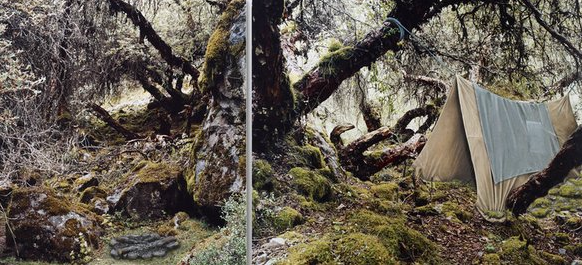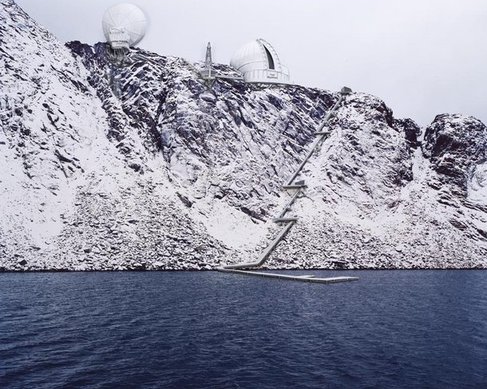The world can sometimes be a harsh place. Just try and make your way across London in public transport at rush hour or, better yet, try to get your Christmas shopping done at the weekend and you will know exactly what I mean. In such circumstances, all you can do is seek shelter. For most of us, that haven is a flat, a house, a favourite coffee shop or gallery. For Alex Hartley, it’s a shipping container in the desert or a tent in the Arctic.

Using aspects of photography and sculpture to formulate a critical stance on contemporary architecture, Hartley has long taken a special interest in shelters manifested in his references to Drop City, the utopic experiment in communal living of the 1960s, and his ongoing Nowhereisland project, a small island in the Arctic region of Svalbard that he claimed to have discovered in 2004. He has since had the island registered on all subsequent maps and has launched a campaign to recruit citizens.

This has proved not only a clever way to question notions of ownership of land, citizenship and national identity. It has also been rather successful as Nowhereisland now has more citizens than the Falkland islands. I am a proud Nowherian myself! In July 2012, Hartley will have the island transported to England and it will travel along the South West coast to mark certain olympic events.
The World is Still Big, his latest exhibition at the Victoria Miro gallery, has moved his interest in the built space away from urban environments and towards wilderness and an investigation of community. Indeed, his current photographs are of structures built and seamlessly integrated in jungles, deserts and forested areas. But the context of his investigation is not the only thing that has changed. On top of his more familiar installations, he has also started to introduce 3D models in the composition of his large scale images. At first sight, his recent works are somewhat reminiscent of Jeff Wall’s glossy, tightly composed landscapes. Yet, with further examination, the added 3D elements emerge from the composition, giving the images the more imperfect, crafty feel of work in progress.
- Alex Hartley Imagine there is a God, 2011. VM Gallery
Although the incursion of mixed-media on C-type photographs is at times hit-or-miss, it is interesting to see Hartley’s work progress in different ways. To that affect, the exhibition includes some artefacts and aspects of documentation of his expeditions to the Arctic in 2004 and 2011. Also not to be missed are the sculpture of life-sized tent half buried in snow and Dropper, the geodesic shelter built out on the terrace. It’s almost tempting to hide in there and see if anybody sends out a rescue exhibition to find us.
- Alex Hartley, Dropper, 2011. Installation Victoria Miro 2011.


















